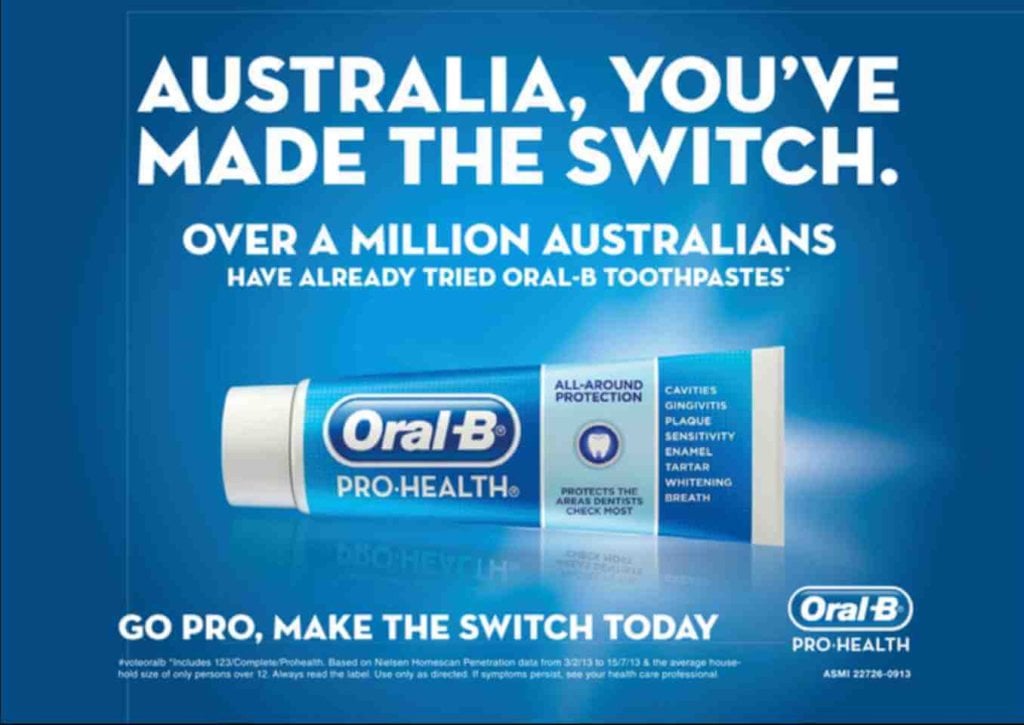6 Real-Life Examples of Fallacies in Advertising
In today’s fast-paced advertising world, grabbing attention is everything. But not all attention is earned ethically. Some ads go beyond creativity, using misleading tactics that manipulate how we think and feel about products. Whether it’s an exaggerated claim, a celebrity endorsement that feels too good to be true, or an ad that plays on your fear of missing out, these deceptive strategies—known as fallacies—are surprisingly common.
Take, for example, an ad claiming that “9 out of 10 people prefer Brand X over any other,” without telling you how this conclusion was reached. This is a classic case of the bandwagon fallacy, making it seem like everyone is using the product, so you should too. While these techniques might seem harmless on the surface, they can deeply affect consumers’ trust and decision-making.
For publishers, allowing such fallacious ads on their platforms can have serious consequences—undermining audience trust, damaging reputations, and even triggering legal issues. Understanding these fallacies and knowing how to avoid them is crucial for maintaining a credible, trustworthy platform.
In this article, we’ll explore six real-life examples of common fallacies used in advertising. You’ll learn how these tactics work, the risks they carry, and why ethical advertising should always come first.
What Are Fallacies in Advertising?
Fallacies in advertising are misleading or deceptive techniques used to manipulate consumers’ perceptions and beliefs about a product, service, or brand.
These fallacies exploit cognitive biases and logical errors to create a false sense of credibility, appeal, or urgency. While not all advertising techniques are fallacious, these tactics can be ethically questionable and potentially harm consumers’ decision-making process.
Why Should Publishers Care About Advertising Fallacies?
Fallacies in advertising might seem like an easy way to generate revenue in the short term, but they can have severe long-term consequences for publishers. By allowing fallacious ads on their websites, publishers risk losing the trust of their audience, decreasing website traffic, damaging their reputation, and potentially facing legal issues.
It’s vital for publishers to prioritize the integrity of their content and the trust of their audience to build sustainable and successful content.
Generally, while such ads might bring in short-term revenue, they can have negative consequences for the publisher and their relationship with their audience in the long run.
Here are the 5 most significant cons of using in fallacies in advertising for publishers:
- Misleading nature. Advertising fallacies involve deceptive techniques to manipulate consumers. When publishers allow fallacious ads on their websites, they are indirectly promoting misleading content. Consumers who encounter such ads might be tricked into making purchasing decisions based on false information, which can lead to dissatisfaction and frustration.
- Loss of trust. Consumers trust publishers to provide accurate and reliable information. Fallacies in advertising can erode the trust consumers have in the platform. If visitors perceive the ads as intentionally deceptive or misleading, they may start doubting the credibility of the entire website’s content, including its editorial or non-advertising articles.
- Decreased website traffic. As trust in the publisher’s content diminishes, users may become reluctant to visit the website. They may seek out more reputable sources that they can trust. Consequently, this drop in traffic can lead to decreased engagement and lower ad impressions, resulting in reduced revenue for the publisher.
- Reputation damage. The presence of fallacious ads can harm the publisher’s reputation within the ad industry. Advertisers might become hesitant to place their ads on a website that allows misleading content, as it could negatively impact their brand image as well.
- Regulatory concerns. Depending on the nature of the fallacious ads, publishers may face legal issues if their advertising practices violate consumer protection or truth-in-advertising regulations. This can result in fines, penalties, or other legal consequences, further impacting their revenue and reputation.
Why Do Advertisers Use Fallacies?
Advertisers can use fallacies in their marketing efforts for various reasons.
Firstly, fallacies in advertising can be attention-grabbing and persuasive, evoking strong emotional reactions from the audience.
Advertisers aim to quickly capture consumers’ interest and desire to take action by oversimplifying complex information or exaggerating product benefits. Emotional manipulation plays a significant role, as fallacies create positive associations with products, influencing consumers’ decision-making processes.

Source: Stanford
Moreover, fallacious claims offer a competitive edge in highly competitive markets, positioning products as superior or unique.
Urgency and scarcity are often emphasized through fallacies, driving immediate sales and conversions. Unfortunately, the lack of strict advertising regulations sometimes allows advertisers to resort to these misleading tactics. .
The effectiveness of logical fallacies in advertising campaigns
The effectiveness of logical fallacies in ad campaigns is a complex and contentious topic. Fallacies can have some short-term impact on consumers and may increase attention and emotional engagement.
Here are 4 pros of using logical fallacies in ad campaigns:
- Emotional appeal–fallacies often appeal to consumers’ emotions, which can be a powerful driver of decision-making. Emotional ads may create a stronger connection with the audience, increasing brand awareness and recall.
- Attention–grabbing–ads that employ fallacies might stand out from more straightforward and logical messages, capturing consumers’ attention and making them more memorable.
- Simplicity–fallacies can oversimplify complex information, making the message easier for consumers to understand quickly.
- Immediate impact–fallacies can create a sense of urgency or fear, prompting consumers to take immediate action, such as purchasing or signing up for a service.
6 Common Advertising Fallacies
Many companies employ the most common logical fallacies as persuasive techniques in ads. We’ve gathered the 6 most common advertising fallacies for you to understand them better:
1. The ad hominem fallacy: when ads get personal
The ad hominem fallacy is a type of faulty reasoning that occurs when someone attacks the character, personal traits, or circumstances of a person making an argument rather than addressing the merits of the argument itself.
In this fallacy, instead of engaging with the substance of the argument, the attacker tries to discredit the opponent or their viewpoint by focusing on irrelevant personal attributes, past actions, or perceived flaws.
The Latin term “ad hominem” translates to “to the person.”
In an ad hominem fallacy, the attacker shifts the focus away from the actual argument and directs attention toward the person presenting it. This tactic is often used to divert attention, dismiss opposing viewpoints, or undermine the credibility of the person making the argument without addressing the underlying issues.
2. The appeal to authority fallacy: celebrity endorsements and more
The appeal to authority fallacy is a persuasive technique that involves showcasing industry specialists or experts endorsing a particular product or service. Consumers tend to trust and value the opinions of recognized authorities, and advertisers leverage this behavior to gain credibility for their offerings.
Ads employing the appeal to authority approach often feature individuals presenting themselves as experts, while some ads may even hire real industry specialists to convey the message.
These ads commonly include the name or image of the expert, creating an impression that they endorse the product or service being advertised.
For example, the ad for “Trump Steaks” uses the appeal to authority fallacy by featuring Donald Trump as the authority endorsing the product.

Source: MotherJones
The appeal to authority fallacy implies that the steaks must be high quality and worth purchasing simply because they are associated with Donald Trump. The ad includes a phrase like:
- “Trump Steaks–the world’s greatest steaks”
By presenting Donald Trump as the authority figure who personally selects the steaks and associating the product with his wealth and success, the ad appeals to the audience’s perception that if a billionaire like Trump endorses the product, it must be top-notch.
However, the ad doesn’t provide objective evidence or detailed information about the steaks’ quality, sourcing, or taste. It relies on the audience’s acceptance of Donald Trump’s authority and status as sufficient reasons to trust the product’s superiority
3. The bandwagon fallacy: everybody’s doing it
The bandwagon fallacy relies on an appeal to novelty and popular opinion. It plays on the human tendency to follow the crowd or conform to popular trends.
This fallacy suggests that since many people are adopting a particular product, service, or idea, it must be the right choice, regardless of its actual merits or drawbacks.
Advertisers employ this technique to create a sense of social proof, making consumers feel that they should join the majority and not miss out on what seems to be a widespread, favorable choice.
For example, the Oral-B ad uses the bandwagon fallacy by emphasizing the idea that a large number of Australians have already shifted their toothpaste. The ad attempts to create a sense of social proof by suggesting that since so many people have used Oral-B toothpaste, it’s ultimately better than other toothpastes on the market.

Source: Mumbrella
This ad emphasizes phrases like:
- “Over a million Australians have already tried Oral-B toothpastes”
- “Go pro, make the switch today”
These phrases imply that because many people have chosen Oral-B, consumers should also join the majority and switch to their toothpaste. The ad appeals to the audience’s desire to be part of a popular and satisfied group, making them feel they should not miss out on a product many others have already embraced.
The bandwagon fallacy assumes that popularity equates to quality or superiority without providing any evidence or logical connection between the number of users and the toothpaste’s actual effectiveness.
While the ad may create a perception of widespread adoption, it doesn’t necessarily provide objective information about the specific benefits of the product itself.
4. The false cause fallacy: misinterpreted cause and effect
The false cause fallacy, also known as the post-hoc fallacy, is a misleading reasoning tactic that incorrectly links two events or actions in a cause-and-effect relationship, even when no valid evidence supports the connection.
Advertisers use this fallacy to suggest that because one event follows another, the first event must have caused the second.
However, correlation does not necessarily imply causation, and there could be other factors at play that lead to the observed outcome.
For example, there’s an ad from Old Spice–by using their deodorant, the user can smell more powerful. It also features Terry Crews (the appeal to authority fallacy).

Source: PressMKT
The false cause fallacy is subtly present in the humorous and exaggerated portrayal of the product’s effects.
In Old Spice ads, Terry Crews uses their products, and after doing so, absurd and unrelated events occur around him. This context suggests a cause-and-effect relationship between using Old Spice body wash and the outlandish events that follow.
However, the ad intentionally exaggerates and uses comedic elements to create an amusing narrative. There is no logical or factual connection between using Old Spice products and experiencing magical or improbable occurrences.
It’s a classic example of the false cause fallacy as it presents a superficial correlation without providing any genuine evidence of causation.
5. The false dilemma fallacy: limited choices in a world of options
The false dilemma fallacy, also known as the either-or fallacy, is a deceptive reasoning tactic used in advertising to present a situation as having only two options or choices, when, in reality, there could be more possibilities available.
It creates a false sense of limited options, forcing consumers to choose between two extremes, even though other viable alternatives might exist.
For example, you see an ad promoting only two monetization strategies, making it seem like publishers must select one of the options presented.
This ad might claim:
- “Either choose intrusive pop-up ads for maximum revenue or stick with traditional banner ads for low profits.”
This fallacy oversimplifies the monetization landscape, neglecting various other options that could be more suitable for a publisher’s specific needs and audience.
In reality, there is a wide range of monetization methods available, such as native ads, affiliate marketing, sponsored content, and more, each with its advantages and drawbacks.
Publishers must be aware and avoid falling into the trap of believing they have to choose between just two extremes. Instead, they should thoroughly research and explore the full spectrum of monetization strategies available to find the best fit for their website.
6. The slippery-slope fallacy: scare tactic
A slippery slope fallacy in advertising involves making an argument that a minor action or event will lead to a catastrophic consequence without providing any logical evidence for this claim.
For example, an ad might exaggerate the negative outcome of not using interstitial ads on your website, suggesting that without them your website will fail.
In this ad, the advertiser does not provide any logical connection or evidence to support this claim. Instead, they exaggerate the negative outcome of not using interstitial ads and ignore other legitimate monetization strategies that could be equally effective or even better for the website’s success.
This can create a sense of fear and urgency in publishers, making them believe that using interstitial ads is the only way to save their website from impending doom.
By presenting failure as the inevitable result of not using their specific service, the advertiser appeals to emotions rather than providing a well-reasoned argument based on facts or data.
Using interstitial is just one option among many, and its effectiveness can vary depending on the website’s niche and audience preferences. Publishers should be cautious of such slippery-slope fallacies and consider multiple monetization strategies that align with their website’s goals and user experience.
How fallacies shape audience reactions?
Fallacies can profoundly impact the audience’s reactions by tapping into emotions, cognitive biases, and perceptions. Through emotional manipulation and appeals to fear, desire, or urgency, fallacies evoke strong and immediate reactions. By exploiting cognitive biases, they sway how people process information and make decisions, making the flawed reasoning presented more compelling.
Additionally, fallacies use authority figures or testimonials to create a sense of credibility, leading the audience to trust the message more readily.
The bandwagon effect fosters a sense of inclusion, urging the audience to follow the majority and feel part of a larger community.
On the other hand, fallacies that emphasize scarcity or urgency can prompt immediate actions from the audience.
However, while fallacies might yield short-term responses, they come with risks, such as eroding trust and credibility in the long run. Responsible advertisers prioritize transparency and honesty, aiming to build genuine connections with their audience rather than relying on manipulative techniques.
Programmatic Advertising vs Fallacies in Advertising
Programmatic advertising and fallacies in advertising are fundamentally different approaches. Programmatic advertising is a data-driven, automated method to deliver ads more efficiently and effectively to the right audience.
It relies on technology and algorithms to optimize ad placements and improve ROI.
On the other hand, fallacies in advertising involve manipulative and deceptive techniques that may mislead consumers and undermine the integrity of the advertising message.
While programmatic advertising is a legitimate and widely used strategy in the ad industry, fallacies are ethically questionable and may harm the relationship between the brand and its audience.
Conclusion
While fallacies can have some short-term effectiveness in attracting attention and emotions, they come with significant risks and long-term consequences.
You should prioritize honesty, transparency, and the long-term trust of your audience. We advise you to focus on delivering genuine value and meeting your audience’s needs! Building authentic and lasting relationships with your audience is crucial for sustainable success, rather than relying on deceptive tactics that may ultimately backfire.


